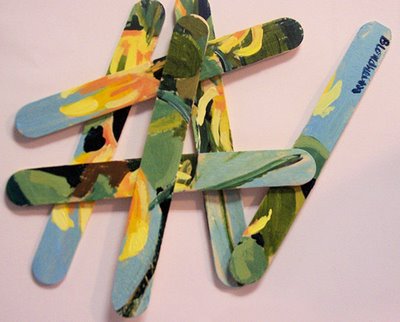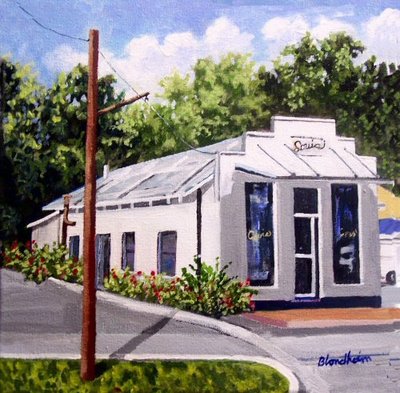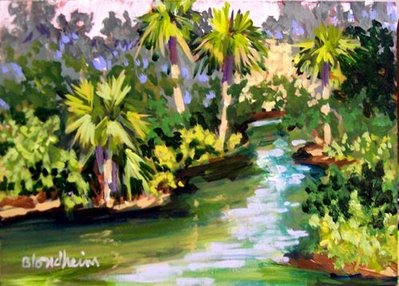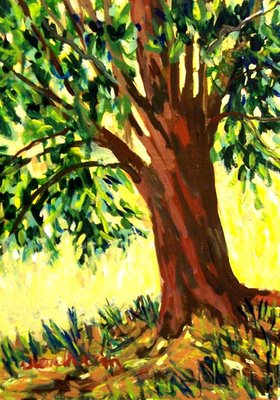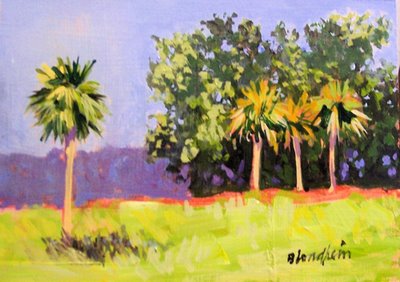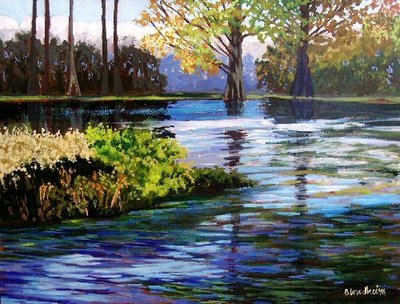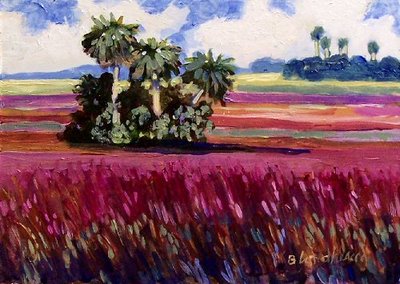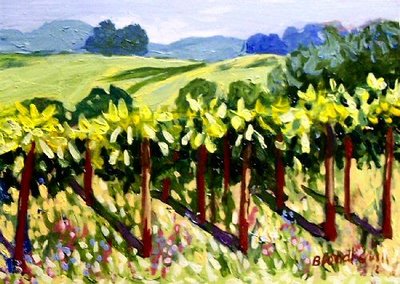
6x8 inches
acrylic on linen panel
300.00
silver frame
Purchase at: www.lindablondheim.com
Painters Tip
Happy New Year dear friends.
I have started doing the paperwork for taxes, as I try to get them out of the way immediately after the holidays. One of the things I do, is analyze what worked for me in terms of investment for marketing, advertising, equipment, and supplies, and what was a waste of money for me with little or no return.
I am always dismayed to find that some of my brilliant ideas were a complete waste of money and time but hindsight is easy isn't it? I think it is important to study our expenses in order to become more efficient with our money.
One of the things I will do this year is to not jump into events which have little promise for financial gain. In the past I felt like I should do every event that came along, every paint out, museum or gallery show, just because I was invited. It took me a long time to think first, what is in this for me? What are the chances for financial gain, prestige, good PR? Are the artists just being used for their name recognition instead?
Art is a business and anyone who wants to paint for a living needs to understand profit and loss.
One thing I need to remember is good time investment as well as money. I wasted a lot of time in 2006 on projects which were not fruitful or good for me. They did not fit my personality well and caused great annoyance for all parties involved. I learned that I am very independent and do not work well in groups or by committee. I am the captain of my own ship and I will not make that mistake again this year.
You may want to go through this analysis of your art business or even your hobby and figure out what is a good investment of time and talent and what is not.
Are you in groups which take up time but give you little value? Are you investing in advertising which gives little reward in sales? Are you using equipment and mediums or are they sitting in a corner? Are you satisfied with the medium you are using or is it simply a habit?
This is a good time of year to re-focus our work and our goals. Starting fresh is a good thing once a year. Sweep out the cobwebs and get to work with new ideas and inspiration.




